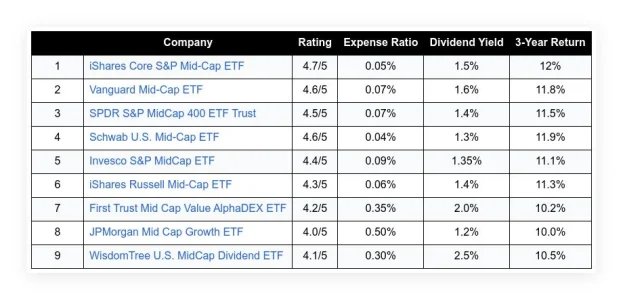We all know how convenient it is to swipe our credit cards for everyday purchases. In fact, as of 2022, 82% of U.S. adults had a credit card, making it the most common consumer lending product.
In addition, according to a Forbes Advisor survey from December 2023, less than 10% of Americans prefer to pay with cash. With 53% of consumers using physical or virtual debit cards, and 37% using physical or virtual credit cards, debit cards and credit cards are the most common payment methods.
There is, however, a complex world of fees associated with credit card processing behind the seamless experience. Often invisible to consumers, these fees can have significant effects on the overall price of goods and services. Moreover, these fees are far more common than you may realize.
“It’s relatively common for merchants to add a surcharge for credit card payments, as 79% of Americans say they have been charged this type of fee, according to WalletHub’s latest survey,” says WalletHub Analyst Cassandra Happe.
In addition, Happe notes that Americans dislike being charged extra fees to use credit cards, with 85% saying that it makes them feel nickeled and dimed.
Although credit card processing fees are often unavoidable, let’s unravel the web so that you can make more informed financial decisions.
Table of Contents
ToggleUnveiling the Fee Structure: A Breakdown
There are multiple parties involved in credit card transactions, each incurring a specific cost. Here is a breakdown of the key players and their fees:
Merchants
Businesses pay a processing fee each time a credit card transaction is processed. There are usually two components to this fee:
- Interchange fee: This is the percentage paid by the merchant’s bank to the issuing bank, which issues the consumer’s credit card.
- Assessment fees: Payment processors and banks charge merchants fees for network costs, security measures, and processing fees.
Issuing Banks
In addition to fraud prevention and rewards programs, banks that issue credit cards incur customer service costs. In exchange for interchange fees, merchants’ banks recoup some of these costs.
Card Networks
There are four major credit card networks: Visa, Mastercard, American Express, and Discover. To facilitate communications between issuing and acquiring banks, they charge network fees.
Payment Processors
Several companies, such as Stripe and Square, provide merchants with payment processing solutions and collect processing fees from banks.
The processing fee, which can range from 1% to 3% or more, can substantially affect a merchant’s bottom line.
Who Pays the Price? Understanding Credit Card Fees at Checkout
Although merchants technically pay the processing fees, consumers ultimately bear the burden. Typically, these are the fees you pay when using a credit card. Let’s take a look at it in more detail.
Credit Card Surcharges
These are optional fees that merchants can add to cover the processing costs of credit cards. Most states in the U.S. allow them, but with certain restrictions:
- Maximum: 4% of your transaction value.
- Disclosure: The merchant is responsible for informing customers in-store and online about surcharges before checkout. Customer receipts should also indicate the surcharge amount.
- Limited to Credit Cards: A surcharge cannot be applied to a debit or prepaid card.
- Brand vs. Product Level: Merchants can add a surcharge to all cards from a particular network (Visa/Mastercard) or to specific card types (Visa Signature).
There is one more thing you should know. Only four states currently prohibit credit card surcharges: Connecticut, Massachusetts, Maine, and Oklahoma. Currently, Colorado allows credit card surcharges to be no more than 2%.
Convenience Fees vs. Surcharges
These are flat fees, not surcharges. Depending on the network, their rules may differ:
- Visa: A non-standard payment method, such as online ticket purchases, is permitted.
- Mastercard: Only available to specific merchants, such as government agencies.
- American Express & Discover: There are no specific convenience fee rules.
Minimum Purchase Requirements
In credit card transactions, merchants may set a minimum purchase amount, but it must be less than $10. This requirement should be clearly communicated to customers.
Why Some Stores Don’t Take Credit Cards
Some businesses, especially small ones, can be burdened by processing fees, typically between 1 and 3% per transaction. As a result, they may:
- In all transactions, avoid accepting credit cards.
- Only specific networks with lower fees, such as Visa and MasterCard, are accepted.
You may find this a lot of information to take in. However, if you understand these fees, you can make informed decisions about your credit purchases.
The Ripple Effect: How Fees Impact the Shopping Experience
Again, credit card processing fees aren’t just a business expense. In addition, there are domino effects on you, the consumer:
Higher Prices
In many cases, businesses factor processing fees into their pricing structure. By using a credit card instead of cash or debit, you may unknowingly pay a little more for goods and services.
“The credit card networks charge merchants a fee every time they perform a credit card transaction, so many places try to pass that cost back to consumers by charging more,” explains Happe. For example, gas stations typically charge more for payments made with credit compared to cash or debit cards.
Spending Habits
Processing fees embedded in product prices are more likely to affect consumers who frequently use credit cards for everyday purchases. This situation is particularly dire for people with low incomes.
Furthermore, according to the most recent survey by WalletHub, half of Americans will not use their credit cards if there is a fee.
Limited Reward Programs
It can be difficult for businesses to offer lucrative rewards programs due to high fees. The result may be fewer points earned per dollar spent or even reduced rewards programs.
Discouragement of Small Transactions
When a merchant accepts small-ticket purchases, processing fees can affect profits. As a result, credit cards will be less likely to be accepted for transactions of low value. When this happens, consumers may be forced to pay cash or incur minimum purchase requirements.
Reduced Credit Card Acceptance
The high processing fees may discourage some small businesses from accepting credit cards, especially those with low-profit margins. As a result, you may be forced to carry cash and have fewer payment options.
Hidden Fees Masked by Convenience
Using a credit card is easy, which can cause impulsive spending. In addition to higher prices due to processing fees, this can put a monkeywrench into your budget.
Navigating the Feescape: Strategies for Consumers
Although consumers can’t always avoid processing fees, there are ways to minimize their impact:
- Choose your payment method strategically. For small purchases, use cash or debit cards, since they typically have lower processing fees, if any at all. Use your credit card for large purchases whenever possible for maximum reward points.
- Be supportive of businesses that follow fair practices. Look for businesses that offer reasonable prices regardless of how you pay. It shows that responsible companies are taking fees into account.
- Optimize your rewards. You should choose a credit card with a rewards program that matches your spending habits if you prefer the convenience of a credit card. If you frequently buy groceries or gas, find a card with a lower interchange fee.
- Take advantage of cash-back cards. A cash-back card provides a flat percentage rebate on purchases, making it a good choice for consumers with a variety of spending patterns. As a result, merchants can reduce the impact of credit card processing fees.
- Make use of merchant promotions. Some merchants offer discounts when you pay with cash or debit. For a discount on credit card processing fees, keep an eye out for signs or promotions.
- Transparency is a must. In WalletHub’s survey, 48% of respondents said merchants don’t disclose fees when charging credit card payments. As such, businesses and organizations should be encouraged to increase credit card processing fee transparency.
The Takeaway
In the end, understanding credit card processing fees will help you make more informed buying decisions and keep your budget intact. By understanding the costs associated with different payment methods, you can choose your payment methods consciously and support businesses that adhere to your values and preferences.
FAQs
What are credit card processing fees?
Businesses pay credit card companies and processors fees each time a credit card is used. These fees pay for fraud protection, transaction authorization, and network maintenance.
Do I, as a customer, ever have to pay these fees?
The answer is usually no.
In most states, businesses cannot charge surcharges on debit cards, and credit card surcharges are limited to 4% or less. It is possible, however, for some businesses to:
- Provide a cash discount to make cash purchases more affordable, effectively incorporating the credit card processing fee into the price.
- For smaller transactions, set a minimum purchase requirement to offset processing fees.
Why are processing fees a concern for me?
Typically, you won’t pay them directly, but high processing fees can have several impacts on your business:
- To cover these fees, businesses may raise their prices, affecting your purchase price.
- Credit cards may be less likely to be accepted by businesses, limiting your options for payment.
Can I avoid these fees?
Yes, you can. A few options are listed below:
- Use cash. The business may offer a cash discount if you pay with cash. Plus, you won’t have to deal with credit card processing fees.
- Ask about minimum purchases for credit cards. To offset processing fees on smaller transactions, some stores require a minimum purchase for credit cards.
- Use debit cards. Typically, debit cards have lower processing fees for businesses than credit cards. Again, debit cards cannot be surcharged, only credit cards.
Image Credit: energepic.com; Pexels

















